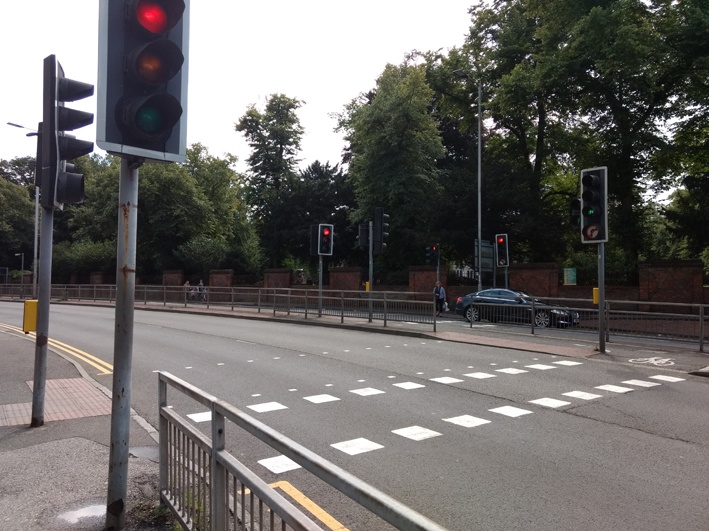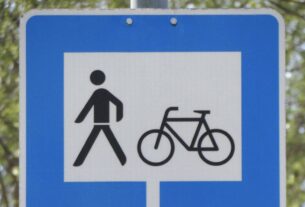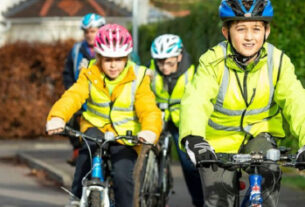After recently acquiring an electric bicycle (which I’ve sort of fallen in love with), I’ve started cycling frequently on my own in Reading.
My previous cycling experience is either rather more previous (in Cambridge as a student more years ago than seems reasonable) or rather less on my own (on the back of a tandem where I don’t have to worry about navigation).
Compared to cycling in Cambridge, I’ve found that in Reading there are a lot more cycle routes which are shared with pedestrians.
As a result I’m often going through traffic lights as if I am a fast sort of pedestrian rather than as if I am a slow sort of vehicle – and on my route from Caversham to Green Park there are a number of places where I feel there could be some quick wins in terms of smoothing progress along the way.
I believe a reasonable amount of thought goes into traffic light programming to ensure cars don’t hit a line of red traffic lights.
However, at shared pedestrian/cyclist crossings, users often press the button, then wait and cross halfway – and then have to press another button to confirm they’d like to continue (and wait again for the light to change).

I can confirm nobody is getting to the traffic island in the middle of Forbury Road and going “Aha! This is the picturesque view of the Forbury Lion that I was looking for, shall I stop and stay here?”
We ALL want to cross the other side of the road pretty much immediately. So why doesn’t the other side of the crossing prepare for that eventuality?
Speaking of that crossing on Forbury Road, why is there no push button reachable from the bicycle side? Shuffling sideways to reach a button is definitely more awkward on a bike than on foot.
Perhaps the one used by the pedestrians could be swivelled around to be more accessible, or maybe a second box could be added facing the cyclist section of the route.
Frustratingly, there seems to be a number of crossings which follow the logic “when the button is pressed, wait for a certain point in the cycle, then go green”.
I had far rather they followed the logic “when the button is pressed, if it is safe to cross, go green”.
For example, on the A33 near Grosvenor casinos the traffic coming into Reading is stationary most of the time. But if, for example, the button is pressed when it has just stopped, it waits until until the next phase of the lights to go green.
This means it cannot tell the difference between “the traffic will move in two seconds” and “the traffic will move in two minutes” – an important safety distinction!
Finally, I would love a safer route between Caversham and south of the station (one that I might eventually consider letting my (now) toddler travel on whilst he still qualifies as “not an adult”).
I welcome the work that Reading Cycle Campaign have done to push for this, and I hope that warm words on the topic from Reading Borough Council bear fruit in due course.
But, all in all, it’s been a joy to have the freedom of being on the bicycle. I’d love to see the routes improved so that more people feel able to discover this too.
Hilary Smart



This is a great article and covers a lot of important points that traffic planners need to consider. There are a few points you missed however, in no particular order:
1. The position of the display of the green person/cycle, low down near the button, is not suitable for cyclists. It cannot be seen on the approach to the crossing at least half of the time – so if you want to check it, you need to cycle up to the edge, stop, and turn your head 90 degrees to check it (at which point it generally changes from green to red).
2. Most of the roads on the A33 have multiple separate crossings. If a pedestrian or cyclist waits for a green person/cycle on each of these it is some times necessary to wait for 3 or even 4 complete cycles of the lights to cross a single junction.
3. The lights are only green for pedestrians/cyclists for a tiny proportion of the time that it is safe to cross (you touched on this briefly) – the light cycle might be split into 4 phases, and it might be safe to cross at certain point 75% of the time, but the green person/cycle will only show for less than 25% of the time (and on some of them, it requires someone to press a button, early in the cycle, others don’t require a button push – virtually all the buttons are cosmetic anyway, as the main carriageway light cycles are fixed).
There are other issues with this route, but they aren’t relevant to this article.